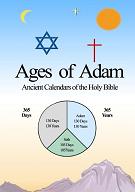1.
O’sirus played an important leadership role in ancient
Egyptian polytheism.
a.
True
a. True
b. False
2.
Sirius Major (dog star) identifies with the Egyptian god
__________________.
a. Nut
a. Nut
b. Isis
c. Osirus
d. Seth
3.
Standing stones or obelisks provide a way to sight
rising and setting positions
____________________________.
a. on
the horizon
a. on the horizon
b. for fixed culture
c. at equinoxes and solstices
d. all above
4.
The Sothic Cycle was a cascaded time concept that
spanned ___________ using 365-day-solar-years.
a.
800-years
a. 800-years
b. 1,461-years
c. 364-years
d. 365-years
5.
The solar-side component of the Egyptian Calendar
includes 12-moon-months of 30-days each, and a special
5-day feast period that began with __________
___________.
a. fall
harvest
a. fall harvest
b. summer solstice
c. spring equinox
d. winter solstice
6.
One 1,461-year Sothic Cycle includes:
__________________.
a. 4 x 365-years,
plus 1 leap year
b. 1,460-years of
354-days
a. 4 x 365-years, plus 1
leap year
b. 1,460-years of 354-days
c. 1,460 pyramids
d. Passover calculations
7. Genesis 5:23
mentions the lifetime of Enoch was _________________.
a.
364-daysSea Scrolls
a. 364-days
b. 365-years
c. in the Book of Enoch
d. in the Dead Sea Scrolls
8.
The legendary Egyptian O’sirus and Mesoamerican
Quetzacoatl __________________________.
a. were
the same star b. have similar
resurrection myths
Jewish Calendar
d. were planetary dieties
a. were the same star
b. have similar resurrection myths
c. are part of the Jewish Calendar
d. were planetary dieties
9.
Literal meanings for Adam and Eve illustrate the generic
____________.
a.
personal names
a. personal names
b. sun and moon
c. man and woman
d. a. and c.
10.
Early theology aligned the solar-side of lunar/solar
calendars with
a. the
sun
a. the sun
b. the male gendar
c. the stars
d. a. and b.
11. The lunar side
of lunar/solar calendars closely links with _________.
a. Eve
a. Eve
b. the moon
c. a 7-day-week
d. all above
12. A 364-day
calendar year was likely practiced in ______________ and
by Jewish people using the __________________________.
a. early Egypt, 19-year
Metonic Cycle
20-year l/s cycle
c. early Egypt, 50-yearJubilee Cycle
d. Mesopotamia,
20-year l/s cycle
a. early Egypt, 19-year
Metonic Cycle
b. Mesoamerica, Katun 20-year l/s cycle
c. early Egypt, 50-year Jubilee Cycle
d. Mesopotamia, 20-year l/s cycle
13. Genesis 5 records
the ________________ and ___________________.
a. Venus story,calendar times
b. children,
grandchildren
events
d. Antediluvian
Patriarchs,
a. Venus story, calendar
times
b. children, grandchildren
c. the family of Moses, events
d. Antediluvian Patriarchs, calendar times
14. Baal and
Astaroth were a pagan ___________________________.
a. ritual
a. ritual
b. god and goddess
c. binary star
d. place(s)
15. Babylonian
influence related to Jewish 19-year lunar/solar calendar
use is evident from ________________________.
a. the New Testament
a. the New Testament
b. the Old Testament
c. alternative sacred texts
d. all above
16. Ancient
calendars used _____________ ____________ to associate
a. sacred scripturesmatching
c. intensemathematics
d. calendar records
a. sacred scriptures
b. numerical matching
c. intense mathematics
d. calendar records
17. The New Testament (NIV)
mention that Enoch did
a. John 3:15 b. Mark
c. Hebrews 11:5 Matthew 1:1
a. John 3:15
b. Mark
c. Hebrews 11:5
d. Matthew 1:1
18. The main style
of ancient lunar/solar calendars was the
__________________ of time.
a. omissiondoubling
d. numbering
a. omission
b. naming
c. halving and doubling
d. numbering
19. Anniversaries
and holidays are not part of history until after they
happen.
a. True
a. True
b. False
20. Ages_of_Adam and Holy_of_Holies apply
___________ __________ to explore time recorded in
Genesis.
a. historical evidence
a. historical evidence
b. calendar tools
c. calendar tools
d. prophetic scripture
e. all above
 Egyptian Calendar Quiz
Egyptian Calendar Quiz